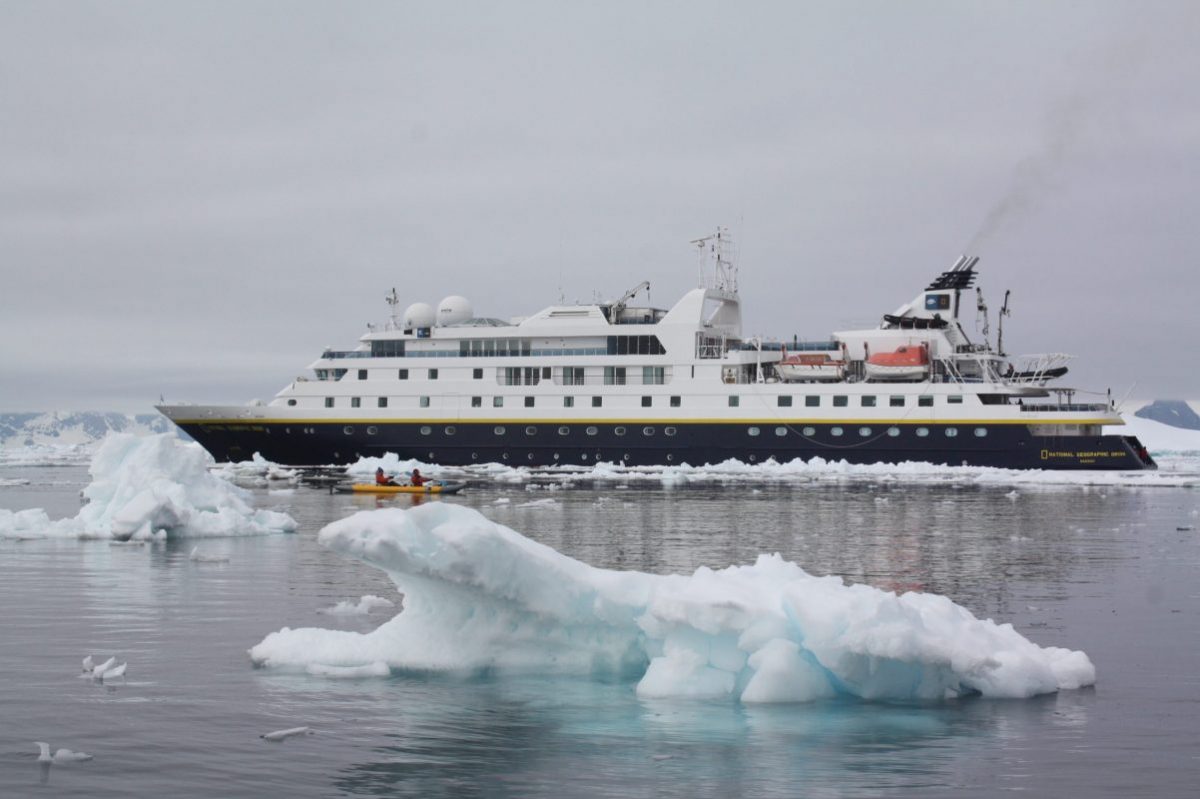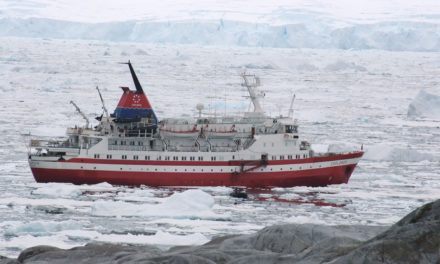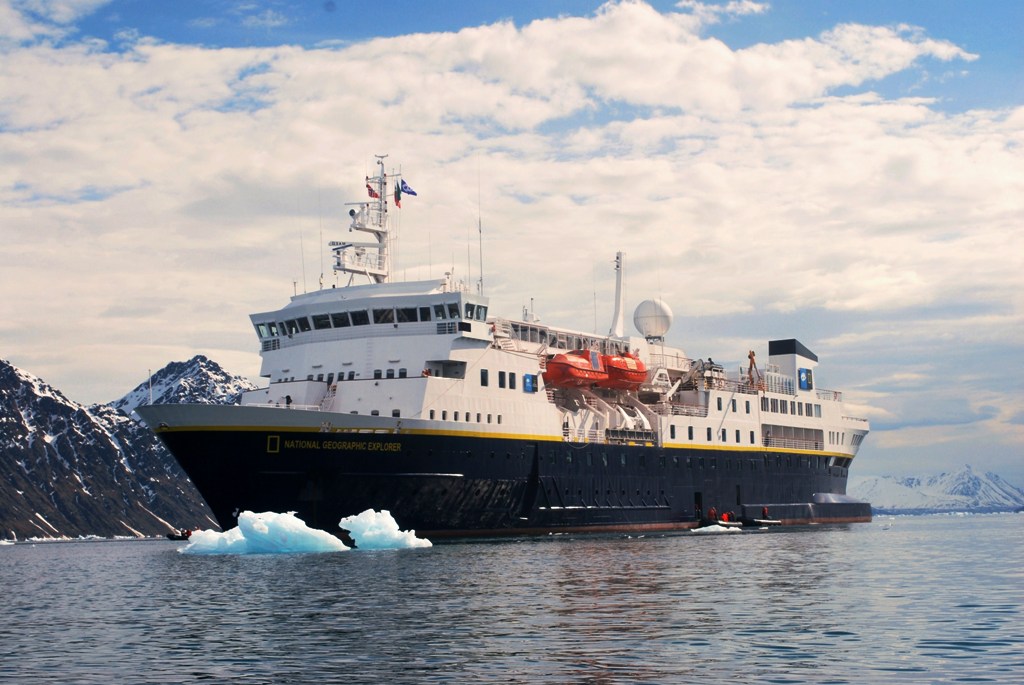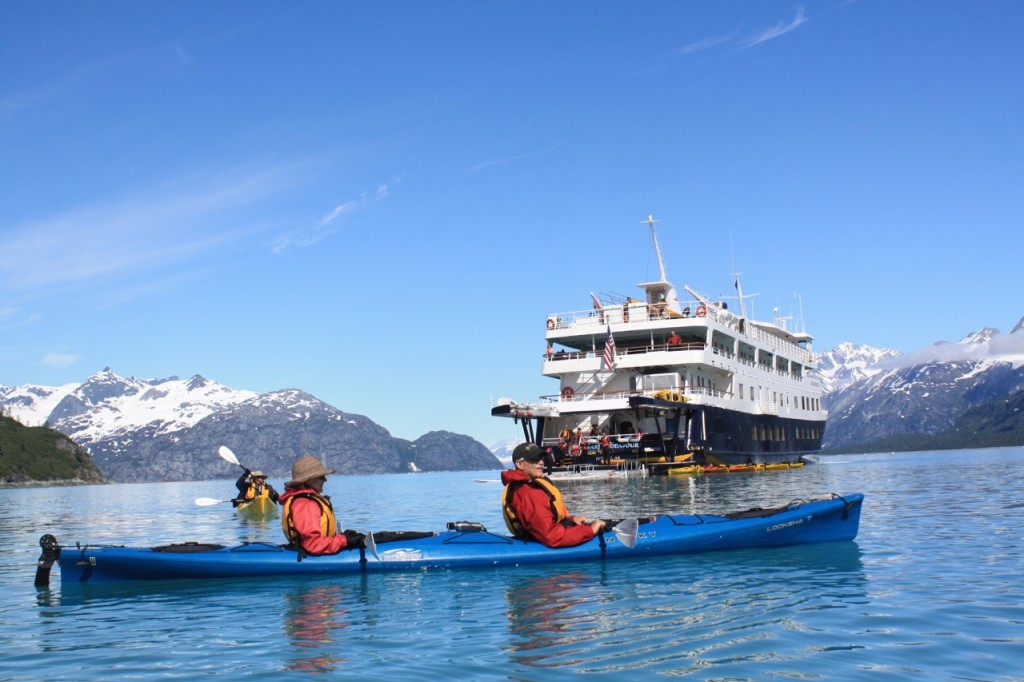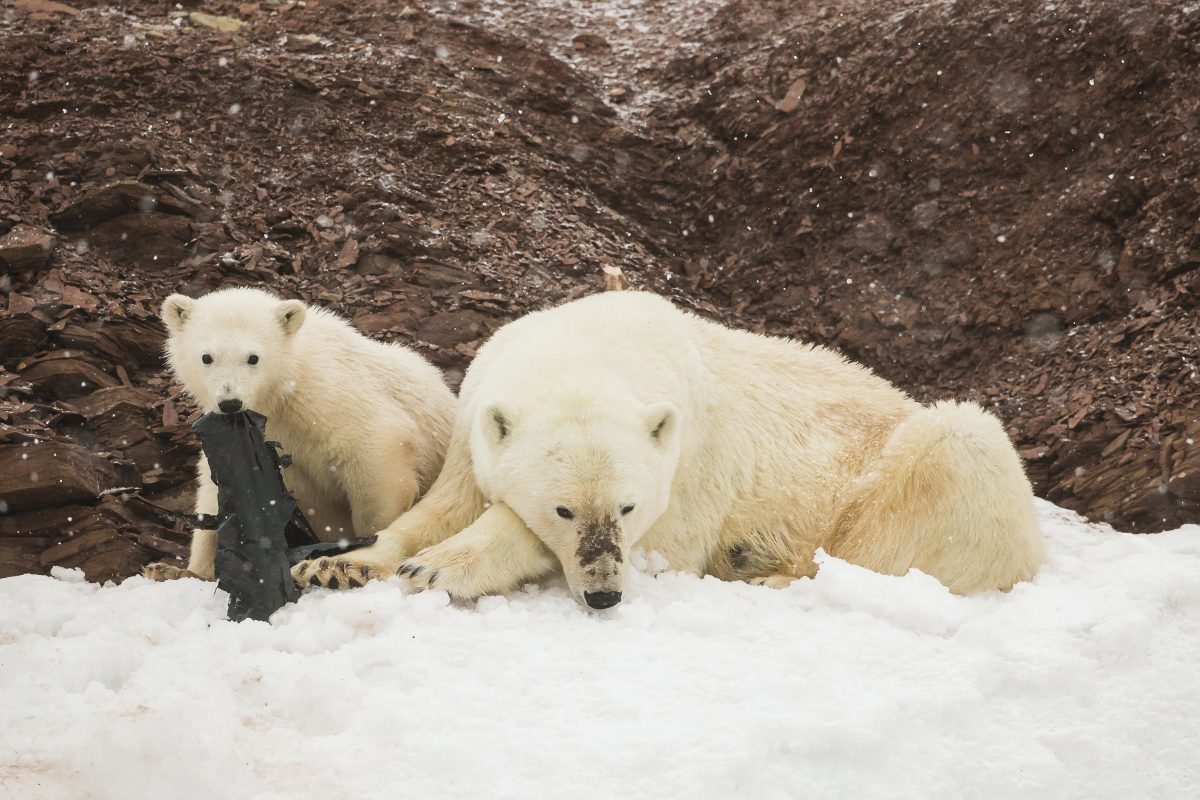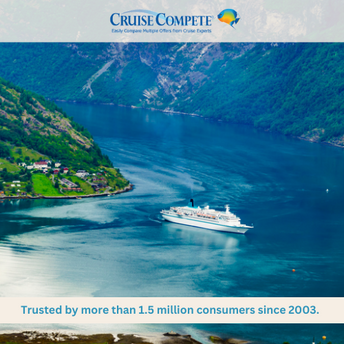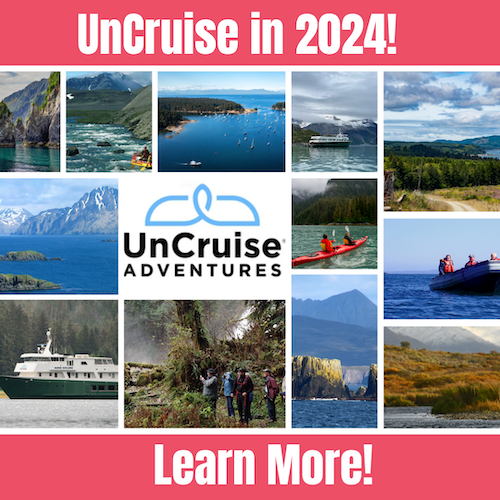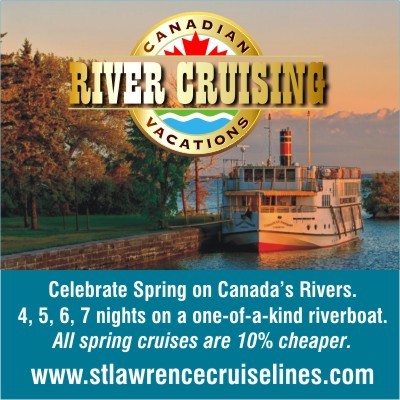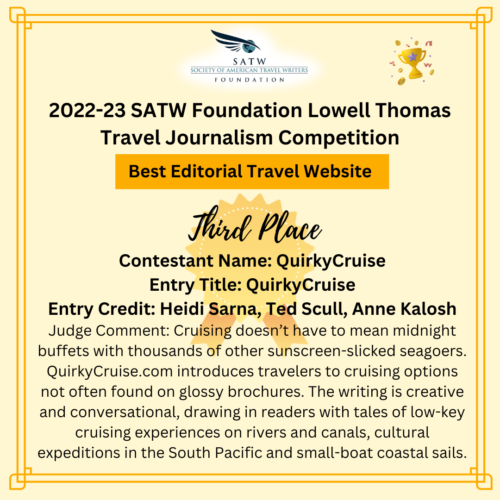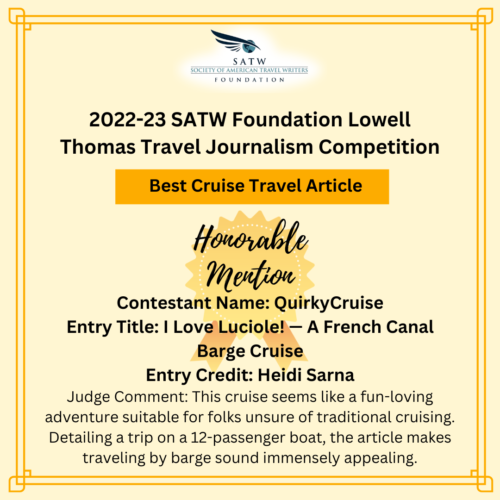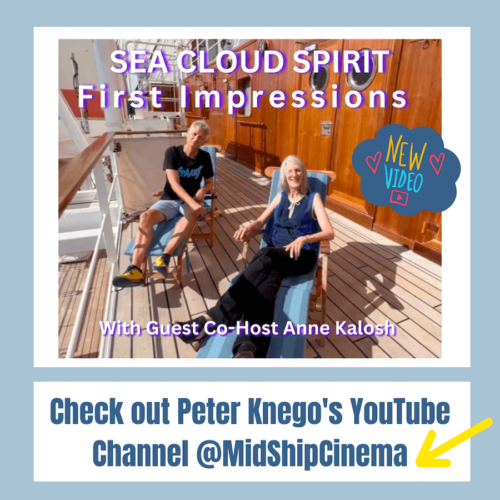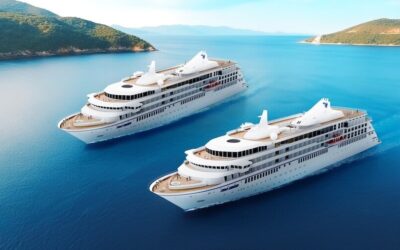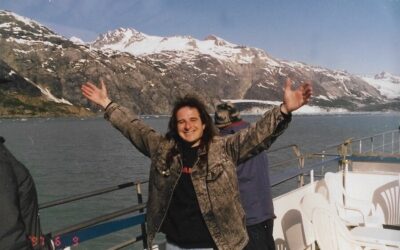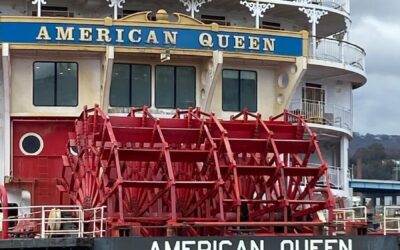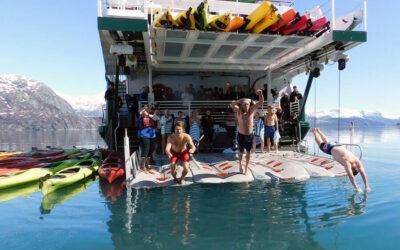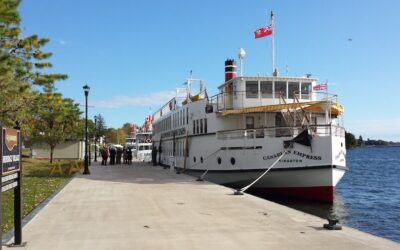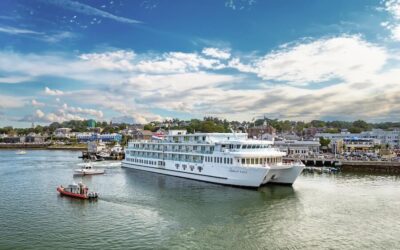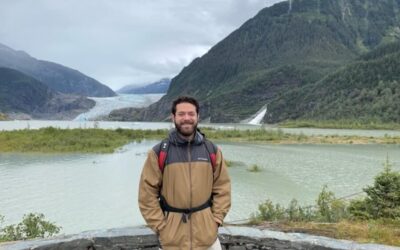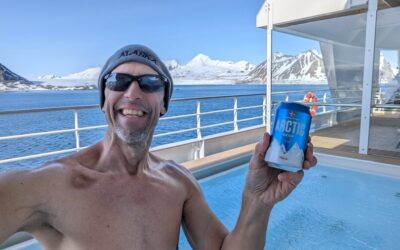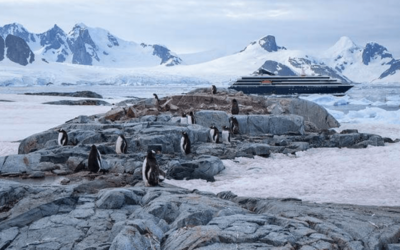By Anne Kalosh.
This story was first posted by Anne in Seatrade Cruise News and is reproduced by permission of Seatrade; click here for the full original article.
Similar to the river cruise business several years ago, the expedition cruise sector is on the cusp of a building boom that will fuel tremendous growth, according to Capt. Ben Lyons, CEO of Expedition Voyage Consultants.
Sven Lindblad, CEO of Lindblad Expeditions — whose father Lars-Eric was the first to take tourists to Antarctica and the Galápagos half a century ago — expressed mixed feelings about that growth in a keynote address at the “Expedition/Adventure Cruising & the Polar Code” session at Seatrade Cruise Global in March 2017.

Top: Keynoter Sven Lindblad expresses mixed feelings about growth. Bottom, from left: Ponant’s Navin Sawhney, Lindblad, Capt. Ben Lyons, Hurtigruten’s Daniel Skjeldam, Foreship’s Markus Aarnio * Photos: Anne Kalosh
On one hand, opening expeditions to more people helps them “become smarter, learn more and become more relevant as human beings.” With all the challenges facing the planet — it’s “a mess,” Lindblad said — exposing more travelers to the world “in a thoughtful way is good.”
But with the spike in expedition newbuilds arriving in 2019 in particular — an unprecedented eight ships, including one for his own company — Lindblad worries the places they’ll visit can only handle a certain number of people.
“We want to grow but we want to be careful we don’t overwhelm these regions,” he said. “If you take 600 people to a coral atoll, you are not conducting an expedition.”
The glut of 2019 newbuilds means it likely will become necessary to restrict landings in Antarctica. “Everyone will have a lesser experience. That’s a fact,” Lindblad said. The International Association of Antarctica Tour Operators is talking about changing its guidelines to allow one landing per day instead of two, “So there is a downside to growth.”
Another concern is that operators may lack the training and skill to safely conduct expeditions. “Experience matters a great deal when you’re operating in polar regions under tough, tough, tough conditions,” Lindblad said. “We are going to have a lot of stress on human capital.”
Hurtigruten CEO Daniel Skjeldam, whose company is building a pair of 530-passenger ships, rejected the notion of limiting size to the traditional 200 or fewer travelers — except in the Northwest Passage, where he spoke out against Crystal Serenity’s voyages for concern that an accident could overwhelm small communities there.
But Skjeldam doesn’t think tourism should be halted in the Arctic, either: “Brussels forgets people live in the Arctic, in Svalbard, northern Norway and Alaska. They need a livelihood.”
Hurtigruten, which mounted its first explorer cruise to Svalbard in 1896 and whose crews are seasoned in polar waters, is calling for a ban on [ships using or carrying] heavy fuel oil (HFO) in the Arctic and urging the industry to lead the way on tougher regulations, like those that apply to Antarctica.
The European Parliament backs the HFO ban. “I would love to see IMO be part of this, to bring the regulations forward, to bring the technology forward,” Skjeldam said.
He called Antarctica the most regulated region on earth; HFO can’t be used or carried there, and ships that make landings are capped at 500 passengers, with landings themselves limited to 200 people at any one time.
Hurtigruten’s newbuilds will pioneer cruising’s use of fuel cells to cut air emissions and provide silent running for stints in especially sensitive areas.
“The future is electric,” Skjeldam told the Seatrade audience, which included a number of ship captains. He added it’s important to purpose-build for polar waters.
Hurtigruten’s pioneering hybrid system, debuting on 2018’s new ship Roald Amundsen, will “take the industry forward. It’s the most technologically advanced ship that will be out there,” Skjeldam said. “This industry needs to find new technology that significantly reduces emissions.”
For its part, fast-growing Ponant — with four expedition ships under construction — has a 25-year history and was founded by a sailor who still runs the show, noted Navin Sawhney, CEO, Americas, Ponant Cultural Cruises and Expeditions.
Those 184-passenger newbuilds are more compact than the ones Ponant currently operates (the largest carrying 240 passengers), to give more flexibility and access to places like the Great Lakes, where its existing ships are too big.
Sawhney argued expedition cruising is fundamentally different from traditional cruising.
Having a bucket list is fine, he said, “but expeditions are not about bucket lists. There is a big difference. Antarctica is an ecosystem. You have to enjoy it respectfully. Expeditions are truly about learning and discovery and being in an environment where you can reflect.”
It’s the difference between sightseeing and “sightbeing,” as Sawhney put it.
He also thinks there’s a limit to the number of like-minded guests a ship can carry, and “the idea is to transform yourself, not to transform the environment.”… “Size matters. Purpose and mission matter. [The goal is to] come back changed, not just checking off a bucket list.”
Lindblad agreed. On the size issue, his company’s largest ship carries just 148 passengers. Part of that is for concern about big ships “commoditizing a place. I don’t think everything should be available to everybody,” Lindblad said.
And part, he admitted, comes down to aesthetics. “People want to be in wild places,” and a big ship shatters that notion.
“You can’t have an intimate connection to a place [with hundreds of others around you]. You may as well watch a video.”
Skjeldam pointed out the economics of bigger ships enable more people to take part in expeditions and come back as ambassadors for the environment.
Hurtigruten’s recent Antarctica season deployed the 400-passenger Midnatsol and, according to him, that worked well. The ship used purpose-built inflatable boats — not Zodiacs — for landings, and they were equipped with battery packs for silent sailing.
Passenger count, of course, impacts operating income in a business with very tough economics on top of the operational complexity. Small ships have to charge a lot to be profitable, and many companies have failed.
But Sawhney observed that driving up industry capacity eats into profits. Alaska in the 1980s earned some of cruising’s highest per diems. “Back then,” he said, “the per diem price was the cost of a cruise today.”
Session moderator Lyons questioned if the luxury ships being built will change the demographics.
Lindblad wasn’t sure the public is driving this demand: “The expedition traveler is mostly concerned about the experience. They want to hike in the tundra, kayak in the wilderness. They’re not asking for 400- or 500- square-foot cabins.”
At Hurtigruten, the new ships are positioned as providing a “comfortable base camp.”
“The luxury is in the experience,” Skjeldam said. “Operators building for luxury could be a short-term thing.” If the focus is on luxury, “some of the uniqueness will disappear.”
“I wouldn’t be in a tuxedo in Antarctica,” he added.
The panel agreed today’s consumers crave immersive experiences — not sitting over a drink, watching the scenery, but being on land, and active.
Citing the global demand for immersive experiences, Skjeldam thinks adventure travel and travel will merge in decades to come.
And expedition cruising won’t be limited to cold, remote places. Ponant is expanding in tropical and subtropical regions, Lindblad crafts expeditions in western Europe that provide deep immersion into gastronomy and history, and experiencing local life is at the core of Hurtigruten’s coastal voyages, where travelers can even take part in sourcing local foods for the ships.
As far as newbuilds pushing out older ships in the expedition sector, it depends on the company and its market.
“There are people who like older ships,” Lindblad said. “We’re on a very aggressive newbuild program. We’ll continue to operate a combination of old and newer ships. Do we worry about that? Not so much. We’ll deploy them differently.” [And older paid-for ships can charge lower fares.]
Skjeldam agreed ships’ age is less relevant than in traditional cruising, however newbuilds bring innovative technology, reduced emissions and greater safety.
© Copyright 2017 Seatrade UBM (UK) Ltd. Replication or redistribution in whole or in part is expressly prohibited without the prior written consent of Seatrade UBM (UK) Ltd.
Read more about Antarctica small ship cruising here.

